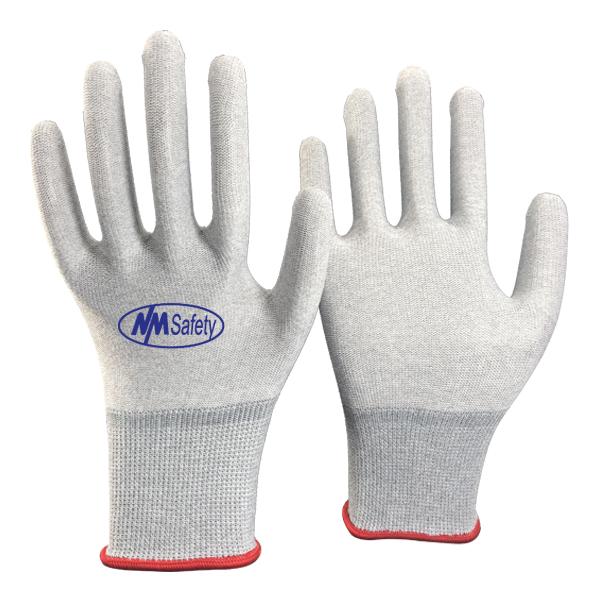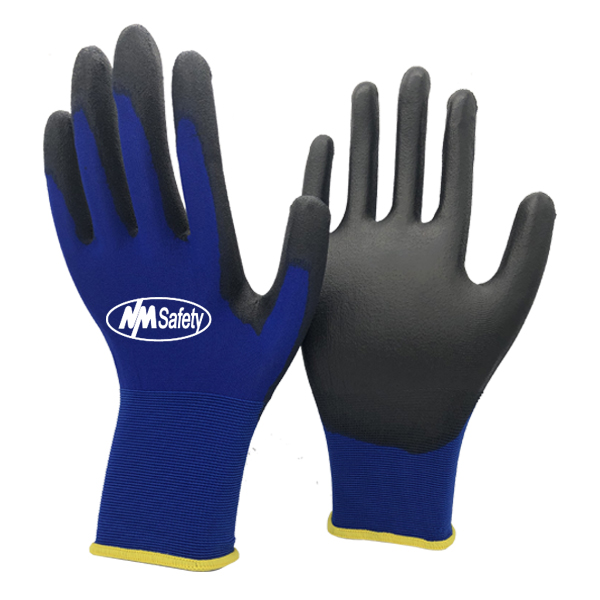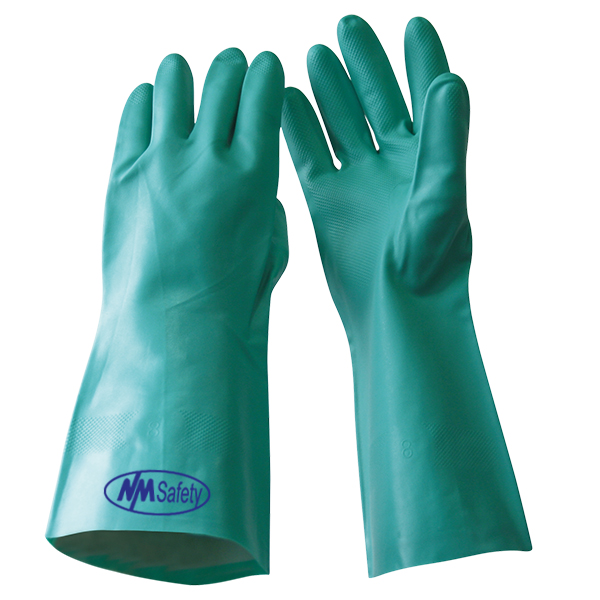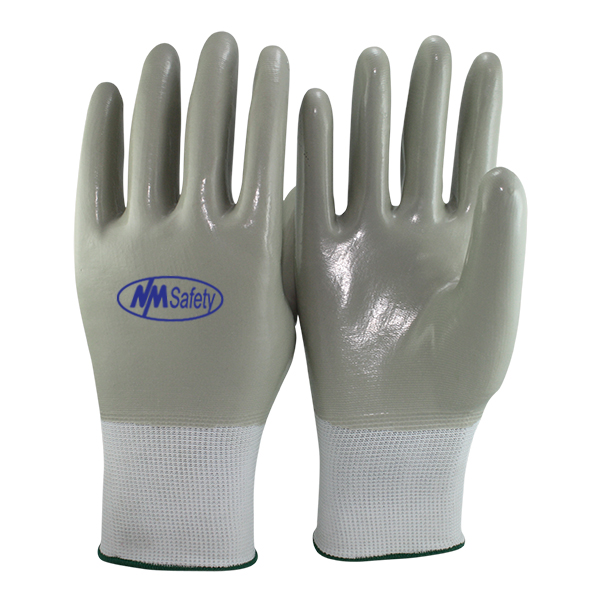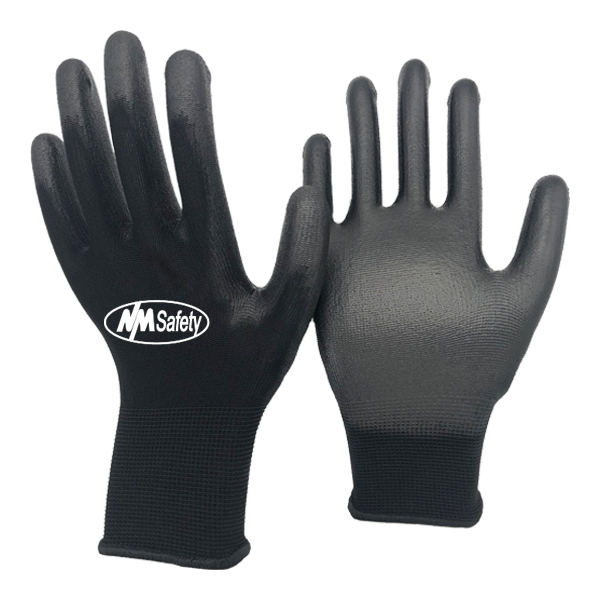Anti-static or ESD-Safe Gloves: Have you ever touched someone's skin and felt a small quantity of energy flow through your hand? Electrostatic discharge, or "ESD" for short, is the release of static energy that has accumulated in our bodies. When an electrostatic discharge occurs, the little current of energy you feel is static energy being discharged at 3,500 volts. Nothing compares to the current we're experiencing. When working with static-sensitive equipment or components, such as PC components or smartphone repairs, it is suggested that you wear ESD-safe gloves.
ESD-Safe Gloves: What Are They? ESD gloves safeguard electronic products and employees from the dangers of static electricity. Electro-static dissipative (ESD) gloves are suited for usage in cleanrooms (microelectronics) and the electronics manufacturing industries.
In low humidity and particle-sensitive situations, anti-static gloves are commonly utilized. Because static charges can harm delicate electronics parts, ESD-gloves are commonly used when handling and assembling electronic gadgets.
What Are ESD-Protected Gloves and How Do They Work? ESD gloves are designed to protect static-sensitive electronic components, such as circuit boards, from damaging electric discharges.
ESD protection should be provided by static dissipative or conductive gloves. Static electricity should be dissipated or electricity should be conducted. These gloves are made up of a combination of soft synthetic fibers and conductive components to accomplish this. This increases the conductive properties of the ESD gloves, preventing static electricity from forming.
Anti-static gloves, like other anti-static equipment such as ESD-safe matting, can reduce the risk of electrostatic discharge. As a result, you should constantly wear a grounding wrist strap to ensure that electrostatic discharge is kept to a minimum.
ESD gloves from NMSafety are inexpensive, long-lasting, and of excellent quality. Antistatic gloves are commonly used in optics, aerospace engineering, electronics, telecommunications, and the petrochemical industry. They are specially developed for manipulating sensitive films, electronic components, circuit boards, and precision equipment.
When it comes to durability, NMSafety's ESD-safe gloves will not impair the worker's dexterity or tactility in any way, and their materials are designed to reduce and minimize static charge build-up. Our Antistatic gloves are dust-free and can be used in conjunction with antistatic wrist bands or on their own, as both are equally effective while working with electronic circuit boards.
Antistatic gloves: This word refers to a material's inability to get statically charged.
Static charge is mostly created by friction between clothing and another surface as you move. This might be your body, other clothing, or even the chair's upholstery. You don't want these fees to pile up. These charges, on the other hand, must be discharged as soon as feasible. It is the potential discharge of the charge that is harmful, not the charge itself. Consider how you remove your fleece sweater on a cold winter day by pulling it over your head.
This discharge produces sparks, which can be deadly in areas where there is a risk of explosion. In explosive atmosphere or ATEX (ATmosphères EXplosibles) conditions, for example, the smallest spark could produce a catastrophic explosion.
What Materials Are Used In ESD-Proof Gloves? ESD safety gloves are available in a variety of styles and sizes, each of which has an impact on the final cost and function of the gloves. Gloves are often composed of one of the following materials:
Anti-static gloves are often made of latex, which is the cheapest and most widely used material. People with latex allergies cannot use it.
While vinyl is a good alternative for employees or employers who are sensitive to latex, it is not as puncture-resistant or durable as latex.
Nitrile gloves are anti-static, puncture-resistant, and long-lasting, and because they are constructed of synthetic latex, they can be used by anyone who is allergic to latex. Vinyl and latex gloves are cheaper than nitrile gloves.
Fabric. This material allows gloves to be reused and recycled, resulting in significant cost savings over disposable gloves.
The following are some of the advantages of ESD-safe gloves:
- Polyester with static dissipative properties (ESD-safe)
- Carbon fiber is used to make 25% of the product.
- A non-slip, high-grip surface covers the palm and fingers.
- It is quite pleasant to wear.
- Exceptional fit.
- It will protect your electrical components from corrosion caused by the oils on your fingers and hands.
- Competitively-priced
- High-quality, long-lasting, and durable
- There is no dust creation, excellent sweat absorption, and anti-allergy properties.
- Excellent for assembling and handling devices that are static sensitive.
- Provide good ESD shielding.
Where Should ESD-Safe Gloves Be Used?: ESD-safe gloves are appropriate for any electronic assembly task that involves skin contact, such as handling microelectronics, PC and laptop repair, or assembly where ESD is an issue.
Even if you are properly grounded, touching an electrostatic discharge (ESD) sensitive gadget can result in a destructive discharge. One technique to slow down and manage the discharge is to increase the contact resistance of the electrical channel. Wearing anti-static, ESD safety gloves is a good approach to accomplish this.
Anti-static gloves are the finest to wear in a variety of scenarios, including the Construction and assembly of a high-end computer. When it comes to working with electronic products, there are a few things to keep in mind.
- Working in a PCB Manufacturing Facility.
- Workshop for mechanical and electrical work
- Industry of Chemicals
- Repairs and upgrades for smartphones and other gadgets are available.
- Working with gadgets that are static-sensitive
- Packaging and production with extreme precision
- If you work with a lot of electronics regularly, ESD-safe gloves are a must.
Conclusion: Even though many people mix these notions up, they have a lot less in common than you may assume. Antistatic materials prevent sparks and explosions, while ESD protects products, and insulating materials keep you safe from electric shocks. We sell a comprehensive range of safety work gloves internationally. NMSafety is a competent OEM and supplier of safety work gloves in China.






